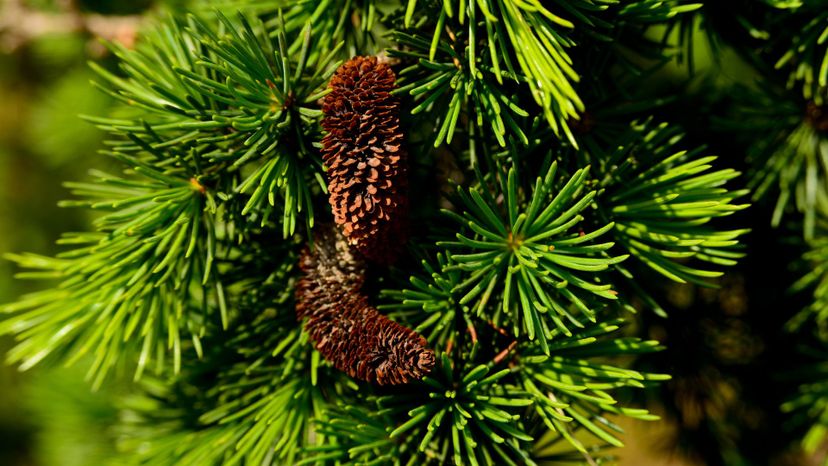
About This Quiz
When you think of coniferous trees, it's easy to first start thinking of pine trees. The pine tree has over 100 species, and they all don't look like the typical needles and cones combo. They also vary by wood hardness -- with some softer (the subgenus Strobus) and some harder (the subgenus Pinus). Pine trees alone could take up the whole quiz!
But did you know that not all coniferous trees are evergreen? There are a few deciduous trees that lose their leaves or needles. And not all evergreen trees have needles -- they can have broader leaves. The cones can also vary in size and color (i.e., they don't look rough and spiky).
Beyond the noble pine trees are other species in the large division known as Pinophyta, also known as Coniferae or Coniferophyta. In that division, there are over 600 species of conifers. And out of four different orders, only one is still with us, Pinales -- which has seven different families.Â
The importance of coniferous forests across the world cannot be understated. Conifers provide us with lumber, paper, Christmas trees and, probably most importantly -- cleaner air by removing carbon dioxide from the atmosphere.Â
So, admittedly there are some pine trees in this quiz, but do you know about the other conifers that exist around the world? If so, don't make like a tree and leave--stick around and take this quiz! We'll be sure not to needle you too much. Good luck!

Found in the Eastern Mediterranean region, the Cedar of Lebanon (Cedrus libani) is not only on Lebanon's flag, it's also the national emblem and the country's coat of arms. The Lebanon Cedar is generally used ornamentally in gardens and parks.

The balsam fir (Abies balsamea) is a fragrant evergreen tree which makes it a popular choice as a Christmas tree. This tree is found in North America, specifically in the northeastern parts of Canada and the U.S.

The main reason why the eastern redcedar (Juniperus virginiana) is misnamed is because of its aromatic heartwood, which is commonly used for cedar chests and as a moth repellent. Many trees in the Western Hemisphere have been mislabeled as cedars, but there are only five species of true cedars, which are mainly found in northern Africa, northern India, Cyprus, Lebanon and Turkey.
Advertisement

The smooth-barked kauri (Agathis robusta), also known as the Queensland kauri pine, can grow up to 50 meters or 164 feet tall. There were more larger and taller trees before Europeans came to Australia and did extensive logging, but the tree is still considered to be of "least concern" when it comes to its conservation status.

The western larch (Larix occidentalis) can be found mostly in the Pacific Northwest regions the U.S. and Canada. In the autumn, the needles turn yellow and only the shoots are left on the branches until the following spring.

The California nutmeg (Torreya californica), also known as the California torreya, is an evergreen which grows in the Sierra Nevada foothills in California. This tree does not produce the nutmeg spice, but the seeds, once processed tastes like peanuts. Also the seeds can be pressed to produce an oil which can be using for eating or cooking.
Advertisement

The blue spruce (Picea pungens) also known as the Colorado spruce, grows in the western regions of Canada and the U.S. This tree is used ornamentally beyond where it grows natively. It's also grown as a Christmas tree.

The mountain hemlock (Tsuga mertensiana) is an evergreen tree which grows in subalpine climes on North America's west coast and in Alaska. It can grow to be more than 800 years old. Although it is native to North America, it has been cultivated to grow in Europe (e.g., England and in Scandinavia).

The giant sequoia (Sequoiadendron giganteum), also known as the giant redwood, definitely lives up to the name Muir gave it, as it is one of the largest trees in the world. This tree has been recorded to be over 300 feet tall with trunk diameters of 28 feet. This tree is only naturally found in the groves of the Sierra Nevada Mountains in California.
Advertisement

The Great Basin bristlecone pine (Pinus longaeva) is one of three kind of species of bristlecone pines. The oldest tree in the world is over 5,000 years old and located somewhere in the White Mountains of California.
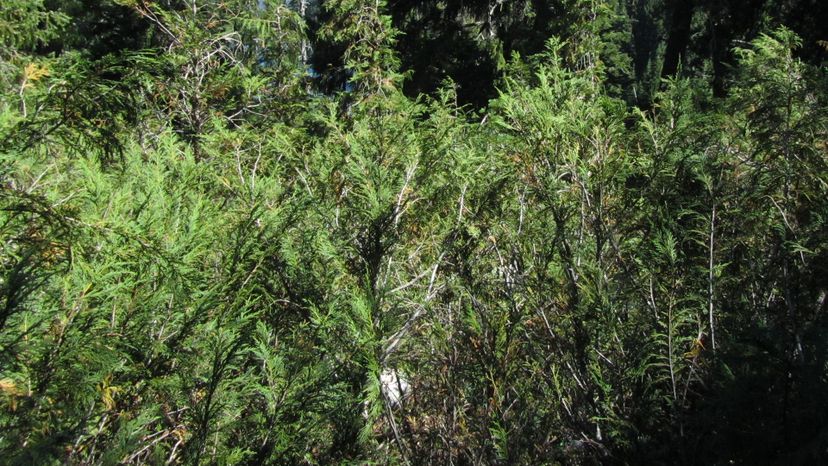
The Pacific yew (Taxus brevifolia), also known as the western yew grows in the Pacific Northwest of North America. The tree helped to develop the chemotherapy drug, paclitaxel, but since it was already become rare, it was not mass harvested. Instead, a partially synthesized version of the drug was created.

Found in the Florida panhandle and as far north as southeastern Georgia, the Florida yew (Torreya taxifolia) is another tree with the common names of "stinking yew" or stinking cedar." That's due to the cones and leaves giving off a strong scent when they're crushed. Unfortunately, due to a fungal blight that's wiped out most of the tree's mature population, this tree is expected to become extinct soon.
Advertisement

The Atlas cedar (Cedrus atlantica) natively grows in the Atlas Mountains in Morocco and other mountainous regions in Morocco and Algeria. Due to fires and human use, this tree is an endangered species.

Named after American botanist William Henry Brewer, the Brewer spruce (Picea breweriana) is a rare one to North America. It locally grows in the Klamath Mountains in northwest California and southwest Oregon. This unique-looking tree is listed as vulnerable due to declining populations.

The white fir (Abies concolor) has two subspecies: the Rocky Mountains white fir (subsp. concolor) and the Sierra Nevada white fir (subsp. lowiana). This tree is used ornamentally and as a Christmas tree.
Advertisement

Most commonly known as the red spruce (Picea rubens), this tree is native to eastern North America and has a variety of uses. The wood is valued for musical instruments such as violins and guitars as well as for producing paper pulp. This is also another notable Christmas tree.

Tamarack (Larix laricina) means "wood used for snowshoes" in the Native American language of Algonquin. Its deciduous needles turn bright yellow in the fall.

The Fraser fir (Abies fraseri) is named after Scottish botanist John Fraser, who collected this and other specimens in the Appalachians and the Alleghenies. Because of an invasive insect, the balsam woolly adelgid, most of the mature Fraser firs have been killed, which has put the tree on the endangered species list.
Advertisement

The dawn redwood (Metasequoia glyptostroboides) is a native Chinese sequoia and is the only living species of its genus. It's a fast-growing tree that can grow up to 165 feet, making it a better choice for parks and large gardens, such as Strawberry Fields.

The Torrey pine (Pinus torreyana) is critically endangered one of the rarest natively growing pines in the world, with only 100 trees remaining. It natively grows in two coastal areas of Southern California. Elsewhere, the Torrey pine can be found growing as close as San Diego and as far away in Oceania (Australia and New Zealand) and on the continent of Africa in Kenya.

The japanese-nutmeg yew (Torreya nucifera) is called kaya in Japanese and is also known as the Japanese torreya. Although this tree is not at all endangered, it was over-harvested in the past, so Japan has protected it to prevent that from happening again.
Advertisement

The Cyprus cedar (Cedrus brevifolia) grows locally in the Troödos Mountains in the central region of Cyprus. The local story of the "Holy Mary pine" comes from a visit of the Virgin Mary to the Kykkos Monastery. To honor her presence, the pine trees bent down, and as a reward of their worship, she turned them in cedar trees.
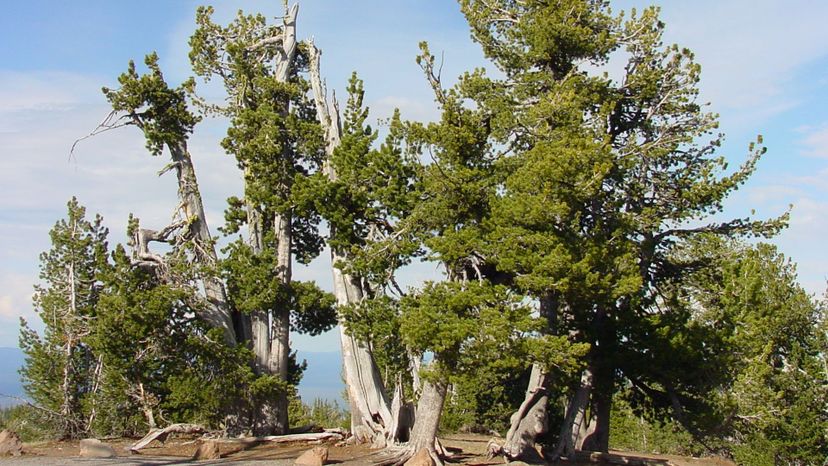
The whitebark pine (Pinus albicaulis) goes by many other names including white pine, creeping pine and pitch pine. Found in the western parts of North America, it is listed as endangered because of a European fungus called white pine blister rust and because of the mountain pine beetle. Wildfires can help this tree regenerate more effectively, but the lack of them due to fire suppression has left older and fungus-riddled trees around, stifling their healthier growth.

The Rocky Mountain juniper (Juniperus scopulorum) is mostly found in the western part of the U.S. It can grow up to 12 feet high and can be used ornamentally for landscaping.
Advertisement

The Sitka spruce (Picea sitchensis) is also the third tallest (as high as 299 feet) and fifth largest conifer (diameter as large as 16 feet). Found along the West Coast, from Alaska to California, the Sitka spruce is named after Sitka, Alaska where it's found in abundance.

The Norway spruce (Picea abies) is often used as the Christmas tree for public display around the world. This tree is also a part of a gift-giving custom between countries, provinces, and cities. One example is how Norway annually gives Washington D.C. a Norway spruce for Christmas as a symbol of friendship and as thanks for support during WWII.

The Virginia pine (Pinus virginiana) also goes by the names Jersey pine and scrub pine. This tree can be found on abandoned farmland and on Christmas tree farms.
Advertisement

The largest of the North American hemlocks, the Carolina hemlock (Tsuga caroliniana) grows locally in isolated parts of the Appalachian Mountains, primarily in North Carolina. The tree is listed as "near threatened" and conservation efforts are underway to preserve the tree.

The Douglas fir (Pseudotsuga menziesii) is sometimes written Douglas-fir to distinguish it from other true firs which belong in the genus Abies. If that wasn't more confusing, it's also called Oregon pine or Columbian pine, and the genus name, Pseudotsuga, means "false hemlock." This tree, which can grow to over 300 feet tall, grows in the western region of North America, from Canada to Mexico.
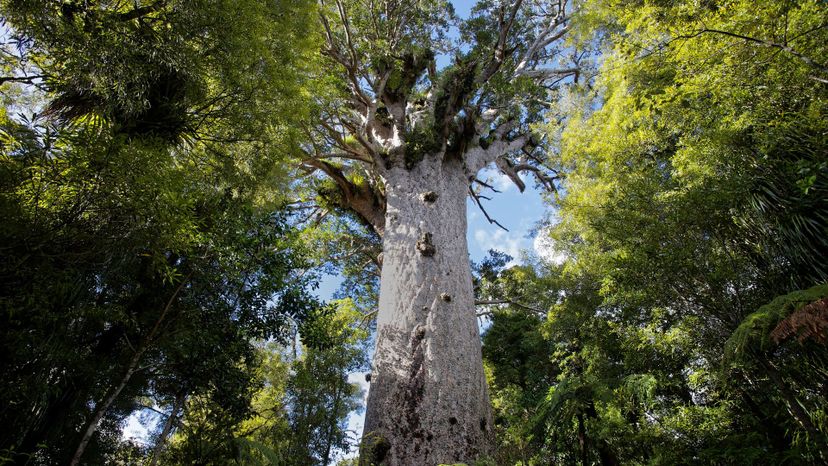
The southern kauri (Agathis australis) is also known as New Zealand kauri -- but locally, it's just known as kauri. The biggest living kauri is called TÄne Mahuta, the name of the MÄori god of the birds and forests. It stands at 148 feet tall and its girth is over 50 feet.
Advertisement

The Martinez pinyon (Pinus maximartinezii), which also goes by the name of big-cone pinyon, is known as a one of the soft pines, in subgenus Strobus. It's also an endangered species because most of the seeds are being harvested for human consumption. This means less seeds are being used to grow new trees.

The Siberian larch (Larix sibirica), also known as the Russian larch, has many industrial uses including as poles and railroad ties. The tree has been cultivated in the U.S. and Canada for many years.

The deodar cedar (Cedrus deodara), also known as the Himalayan cedar, is a sacred tree to Hindus. Deodar in Sanskrit essentially means "divine tree." It can be found in the higher altitudes of Afghanistan, Pakistan, India, Tibet and Nepal.
Advertisement

The Bermuda cedar, (Juniperus bermudiana) also known as the Bermuda juniper, is listed as critically endangered accidentally were nearly wiped out by invasive scale insects when the U.S. built military bases on the island. The local birds which made their homes in these trees are also endangered. Other challenges for conservation include rising sea levels, the slow growth cycle of the tree and other trees competing with it for growth.

The Monterey cypress (Cupressus macrocarpa) may have a small native area on California's central coast, but it's found new life on other continents. As a coastal tree, one unique aspect of the tree is how it can be shaped by the wind, creating unusual contours.

The seaside juniper (Juniperus maritima) is a unique species that grows in a habitat that most other junipers would not prefer. It can be found around the Puget Sound in the Pacific Northwest, by lakes or ocean, growing in the sand or in granite. It was thought to be the Rocky Mountain juniper until 2007 after genetic analysis showed that they were two different species.
Advertisement

The Serbian spruce (Picea omorika) is natively found is Serbia and Bosnia and Herzegovina and can grow over 65 feet tall -- and double that size in rare exceptions. Although it's found in a small place natively, it's cultivated as an ornamental tree in Europe and North America. It's also a small part of the forestry industry, specifically with the production of paper and timber.

The Mediterranean cypress (Cupressus sempervirens), also known as the Italian cypress, is included in many stories from classical antiquity involving mourning. In more modern times, the tree is used in beauty products and has been cultivated outside of the Mediterranean area, as far away as California.

The eastern hemlock (Tsuga canadensis) also known as the Canadian hemlock, have massive trunks by volume, which is why they're considered to be the largest conifer in the eastern U.S. For now, the tree's conservation status is "apparently secure", but the hemlock woolly adelgid, introduced from Asia in the 1920s, have been decimating these trees in more southern parts of the U.S. The eastern hemlock is also the state tree of Pennsylvania.
Advertisement
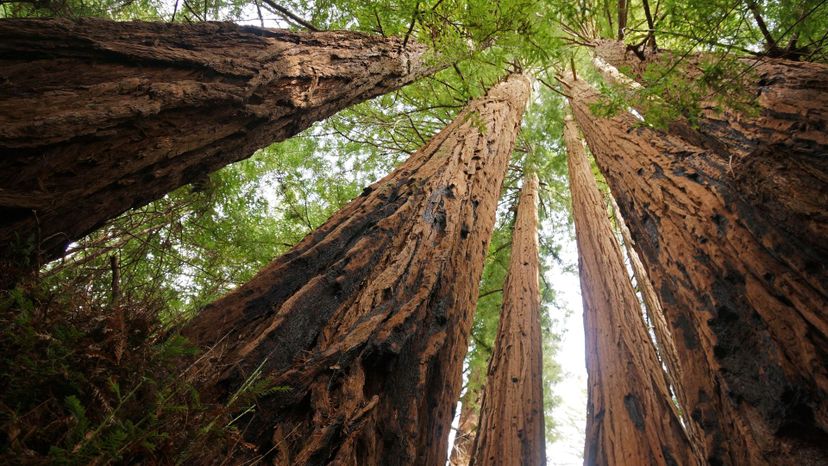
The coast redwood (Sequoia sempervirens), also known as the California redwood, is the world's tallest tree, growing up to heights over 375 feet. It's also one of the oldest trees on earth, with the oldest coast redwood being 2,200 years old. One reason for its longevity is that it's resistant to rot, fungus and insects.